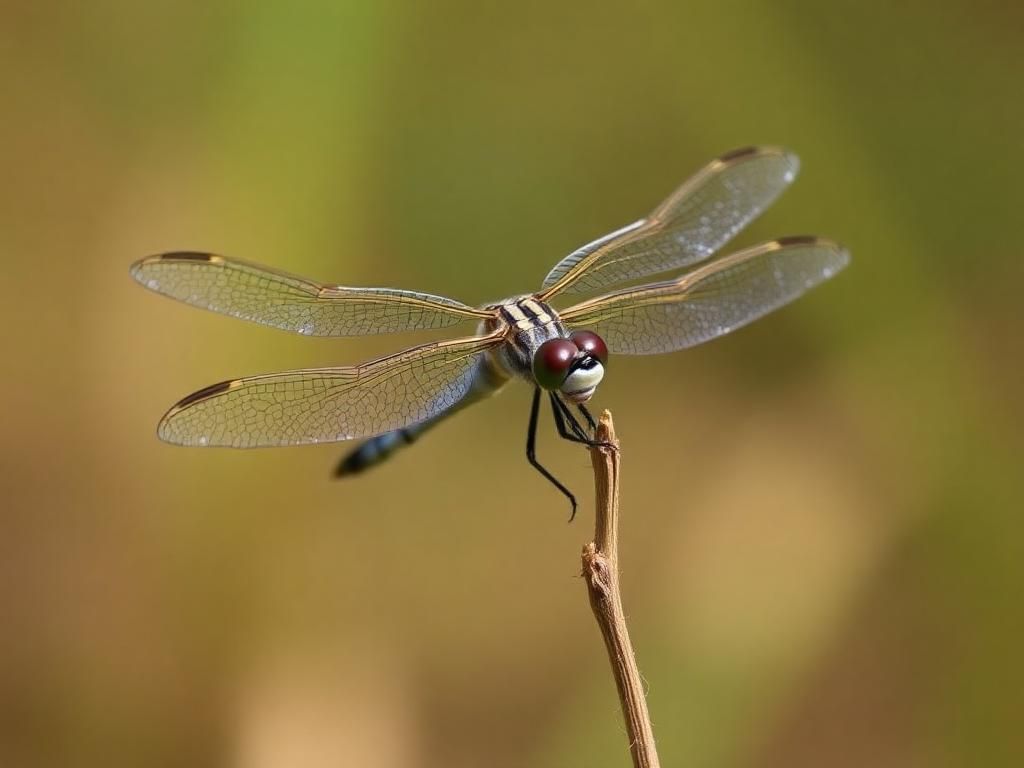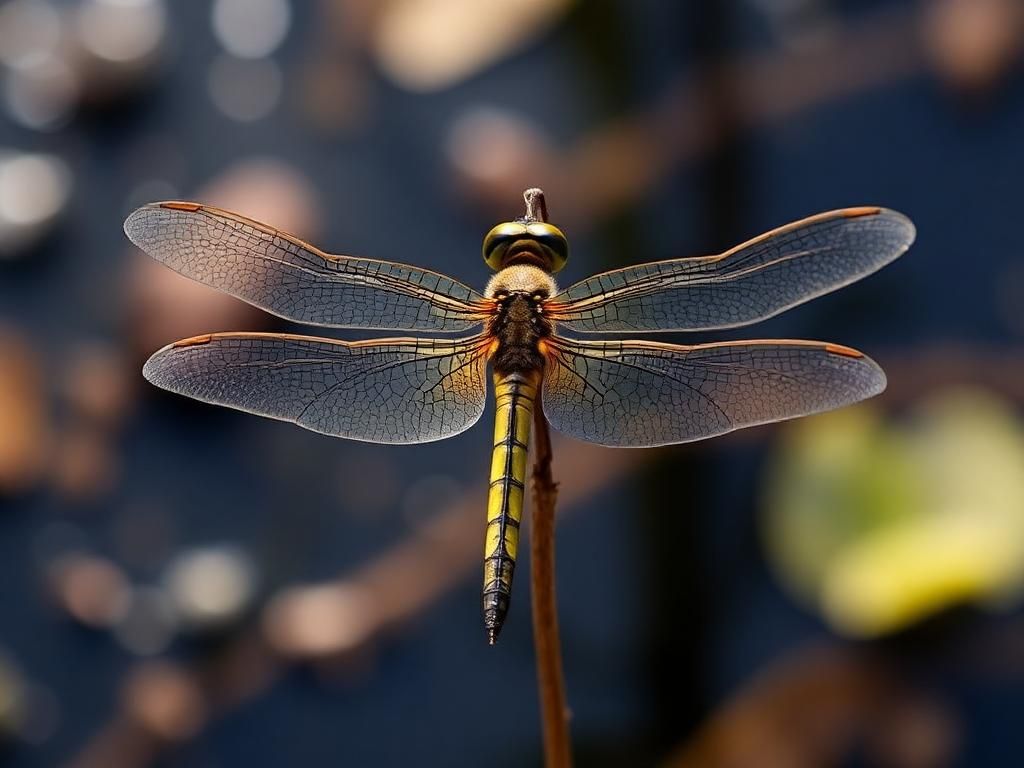Dragonflies, the agile insects that gracefully flit across ponds and streams, possess a layered significance across cultures and ecosystems. Understanding the meaning of dragonfly goes beyond mere biological interest; it delves into a rich tapestry of symbolism, ecological importance, and spiritual interpretation that resonates with people worldwide. This article explores the multifaceted aspects of dragonflies, illuminating how their presence enriches our lives and ecosystems.
Biological Overview of Dragonflies
Physical Characteristics
Dragonflies are distinguished by their long, slender bodies and large, intricate wings that can span several inches. Typically, their body length ranges from about 1 to 4 inches, depending on the species. The colors of dragonflies can be breathtaking, often featuring vibrant blues, greens, and reds. Their wings are noteworthy not only for their beauty but for their structure; they are composed of a delicate network of veins that contribute to their unique flight patterns. Some species even exhibit iridescence, which can be mesmerizing when sunlight filters through.
Life Cycle
The life cycle of a dragonfly comprises three primary stages: egg, nymph, and adult. The egg stage lasts about a week, during which the female lays her eggs near water. After hatching, the nymph stage can last for months or even years, as these aquatic larvae undergo several molts before developing into adults. Once they emerge from the water, dragonflies enter their final stage—the adult phase—which lasts for a couple of weeks to several months, depending on the environment and species. Dragonfly larvae prefer various habitats, including ponds, lakes, and marshes, reflecting their need for a rich aquatic ecosystem.
Ecological Role
Dragonflies hold vital roles within their ecosystems. As predators, they occupy an essential niche in the food web, consuming mosquitoes and other small insects. Their prowess as hunters makes them beneficial to humans by reducing pest populations. Moreover, dragonflies serve as indicators of environmental health; their presence or absence can signal changes in water quality and habitat conditions. Lastly, they contribute to pollination, albeit less recognized than bees, showcasing their importance in maintaining biodiversity.
Cultural Significance of Dragonflies
Symbolism in Different Cultures
In various cultures, dragonflies symbolize transformation and adaptability. In Japan, they are often associated with summer and represent change, reflecting their short lifespans and ability to shift environments. Native American cultures revere them as symbols of transformation and resilience, emphasizing the ability to adapt to life’s challenges. In Chinese culture, dragonflies embody prosperity and good fortune, signifying a strong connection between these creatures and auspicious energy.
Mythology and Folklore
The mythology surrounding dragonflies is rich and diverse. Many legends portray them as beings connected to the spirit world, often representing the lightness of being. For instance, in some Native American myths, dragonflies are seen as messengers from the beyond, serving as conduits between the physical and spiritual realms. The tales surrounding dragonflies often convey wisdom related to transformation and the beauty of life’s fleeting moments.
Spiritual Meaning of Dragonflies
Representation of Change and Transformation
The meaning of dragonfly extends into spiritual realms, where they represent profound personal growth and change. Encountering a dragonfly can be a reminder to embrace life’s transitions and engage in self-reflection. Many spirituality practitioners incorporate dragonflies into their practices, considering them as guides on paths of personal metamorphosis.
Emotions and Inner Strength
Dragonflies symbolize emotional resilience, reminding individuals of their ability to confront fears and challenges. Their ephemeral nature instills a recognition of the importance of addressing and processing emotions, encouraging individuals to rise above life’s turbulent periods and embrace personal strength.

Sign of Lightness and Joy
In various spiritual practices, dragonflies encourage a joyful embrace of the present moment. They inspire individuals to appreciate the little joys in life and advocate for a light-hearted approach, which can enhance overall well-being. Thus, the meaning of dragonfly enriches our understanding of happiness and living fully.
Dragonflies in Art and Literature
Depictions in Art
Dragonflies have been represented across countless art forms, from paintings to sculptures. In visual arts, they often symbolize beauty, freedom, and connection with nature. Artists utilize the dragonfly’s elegant features to convey themes of metamorphosis and the marvels of the natural world. These representations serve as reminders of the fragile beauty inherent in life’s transformations.
References in Literature
In literature, dragonflies often embody themes of transformation and resilience. They appear in poetry and prose as metaphors for change or as symbols of fleeting moments. The poetry associated with dragonflies embraces philosophies of embracing life’s transitory nature and celebrating the beauty of existence. Authors frequently use dragonflies to illustrate the profound impacts of personal growth and to remind readers of life’s ephemeral quality.
Scientific Research and Studies on Dragonflies
Biodiversity and Conservation
Dragonflies are increasingly recognized for their vital contributions to biodiversity. They play crucial roles in maintaining the balance of aquatic ecosystems. However, they face several threats, including habitat loss and climate change. Efforts to conserve dragonfly populations are essential, as their well-being often indicates the health of entire ecosystems. Understanding the meaning of dragonfly in terms of biodiversity underscores the importance of protecting these beautiful insects.
Research Findings
Recent studies highlight the benefits of dragonflies in ecosystems, showcasing their prowess as natural pest controllers and pollinators. Furthermore, innovations in biomimicry, inspired by dragonfly biology, have influenced technology, particularly in the fields of engineering and robotics. For example, studying dragonfly flight mechanisms has led to advancements in the design of efficient flying machines.
Conclusion
The exploration of the meaning of dragonfly unveils a world rich in natural beauty and cultural wisdom. From their ecological significance to their profound symbolism, dragonflies serve as remarkable reminders of life’s transformations, resilience, and joy. Protecting their habitats and understanding their roles in the ecosystem promotes a deeper appreciation for these fascinating insects, ultimately enriching our connection to the natural world.
References

Suggested Further Reading
– “Dragonflies: A Story of Survival” by David A. Merritt
– “The Dragonfly Effect: Quick, Effective, and Powerful Ways to Use Social Media for Social Good” by Jennifer Aaker and Andy Smith
Online Resources
– [Dragonfly Conservation](https://www.dragonflyconservation.org)
– [National Geographic: Dragonflies](https://www.nationalgeographic.com/animals/invertebrates/facts/dragonflies)
| Aspect | Details |
|---|---|
| Physical Characteristics | Long, slender bodies; large wings; vibrant colors |
| Life Cycle | Egg, nymph, and adult stages; habitat preferences |
| Ecological Role | Predators, indicators of environmental health, pollinators |
| Cultural Significance | Transformation, good luck, summer associations |
| Spiritual Meaning | Change, inner strength, joy |
| Artistic Depictions | Representations in various art forms as symbols of beauty |
| Scientific Research | Biodiversity importance, conservation threats, biomimicry potential |
FAQ
1. What does a dragonfly symbolize?
A dragonfly symbolizes change, transformation, and adaptability in various cultures.
2. Are dragonflies good for the environment?
Yes, dragonflies are beneficial as they control pests and indicate healthy ecosystems.
3. How long does a dragonfly live?
The lifespan of a dragonfly varies by species, but adults typically live from a few weeks to several months.
4. Can dragonflies be found worldwide?
Yes, dragonflies inhabit various regions across the globe, from tropical to temperate climates.
5. What do dragonflies eat?
Dragonflies are carnivorous and primarily feed on mosquitoes, flies, and other small insects.
6. How do dragonflies contribute to pollination?
While not as effective as bees, dragonflies can also help in pollination during their feeding activities.
7. Why do dragonflies appear in mythology?
Dragonflies are often seen as symbols of transformation and lightness, commonly featuring in various myths and legends.
8. Are dragonflies at risk of extinction?
Some dragonfly species face threats from habitat loss, pollution, and climate change, highlighting the need for conservation efforts.
9. How do scientists study dragonflies?
Scientists study dragonflies through field observations, ecological surveys, and research on their biology and behavior.
10. What is biomimicry related to dragonflies?
Biomimicry related to dragonflies inspires innovations in engineering and design, especially concerning their flight mechanisms.
